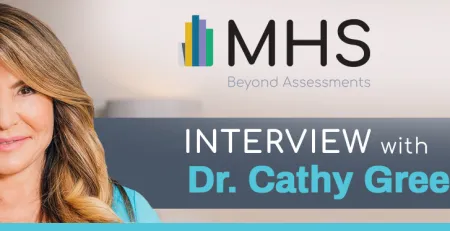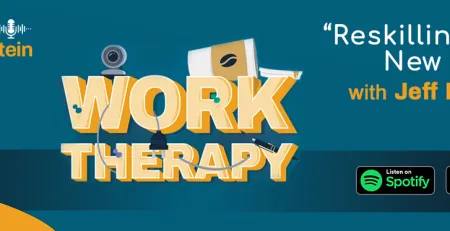Promoting healthy work environments and addressing mental health at work
Jennifer K. Dimoff, Ph.D., is an Assistant Professor in the Telfer School of Management at the University of Ottawa and consults with companies across North American to help solve business problems. She designs, develops, and delivers evidence-based solutions to problems related to leadership, occupational health and safety, and mental health in the workplace. Dr. Dimoff has been recognized for her ability to connect science to applied, real-world settings, recently winning the Society of Industrial/Organizational Psychology (SIOP) Scientist-Practitioner Recognition Award.
We spoke with Dr. Dimoff about her research and the state of the field on mental health in the workplace.
This interview has been edited for clarity and brevity.
What are some reoccurring themes you’ve noticed when you consult with organizations about mental health in the workplace?
DR. DIMOFF: There’s a big gap in the academic literature and in industry when it comes to addressing mental health at work. People are talking about these topics a lot more lately, especially since the pandemic, and with that increased awareness, there’s a lot of corporate investment. Not all investments are equal, though. For example, there could be negative consequences to introducing a program that is ineffective or premature (such as poorly executed diversity, equity, and inclusion [DEI] training that may trigger backlash against the people it is supposed to support). The gap I’ve seen is that companies don’t always fully understand their own attitudes or stigma associated with mental health and understanding an organization’s climate is critical to ensuring the intervention, policy, or program will be successful.
Why do you think efforts to address mental health at work sometimes aren’t successful?
DR. DIMOFF: More publications about mental health interventions in workplaces (especially for healthcare workers) have come out in the past year than in the past 10 years combined. It’s a huge surge! Maybe it’s been happening just as much in those 10 years, but it didn’t get published, so that’s really exciting to see the dramatic increase now.
But not all interventions use rigorous approaches; they might be lacking randomized controlled trials, or a proper pre-/post-test design, or could use unvalidated measures. It’s important for organizations to think about these interventions critically—if you’re going to implement something to improve employee experience and well-being, you really need to evaluate the short- and long-term outcomes.
It’s rare to see interventions that are targeted to a broad level, like management or organization or systems at large. It’s much more common to target individual-level employees, such as mindfulness or resilience training. These approaches have value, but it may not solve the underlying problem. It could add strain and contribute to more severe ill-health. You might be putting more work onto people who are already experiencing high levels of stress. These programs have their place, but they should be part of a larger program that looks at workplace health from multiple angles.
What do you recommend? What kind of programs have you designed?
DR. DIMOFF: I developed the Mental Health Awareness Training (MHAT), which is a 3-hour training specifically for leaders. Leaders are trained to recognize ways in which employees may struggle and how to best offer support. It’s still the only workplace mental health training to demonstrate direct return-on-investment (ROI) for disability claim and duration (that is, costs decrease over the course of nine-month period), and it has showed improvements in leader mental health awareness, literacy, and reduced stigma. Leaders who completed this program were rated as more supportive by their employees and were more likely to suggest resources.
That’s incredible! What inspired the creation of the MHAT?
DR. DIMOFF: The Chief Medical Officer at Bell Aliant recognized that mental health issues were faced across the country and the industry, and they wanted to address it in an evidence-based way. I was hired to help, and my first task was understanding why employees were struggling and why current resource use (such as employee assistance programs [EAPs]) was low. It’s really common for EAPs to be underutilized; 95% of companies offer them, but fewer than 5% of employees typically make use of them.
So, during my research and investigation, I interviewed managers who said, “I recognize when my employees aren’t doing well, but I don’t know what to say to them; I don’t want to cross a boundary, so I just don’t say anything.” Then I interviewed employees who said, “I feel like my managers don’t care about me; they saw me crying, and instead of asking if I was okay, they closed my office door and walked away. I knew they saw I was struggling but they didn’t do anything.”
I recognized managers needed actionable skills to be able to support and help their employees, and nothing like that existed at the time (about 10 years ago).
How did you make the MHAT?
DR. DIMOFF: I worked with MHS (among other organizational research partners) to develop my program years ago! Managers and employees at MHS participated in an early version that helped me refine it into today’s version that is used by a lot of organizations across Canada. I remember the leadership team at MHS was incredibly engaged; they were really interactive with me and with each other, they asked a lot of good questions, and the CEO was in the front row, which was a great signal to everyone that the information was important.
How’d you ensure the MHAT would be a successful program?
DR. DIMOFF: Training is not the be-all end-all, and organizations have to think about other factors, like who they hire as managers and how supportive those people are likely to be, as well as what policies and programs are in place to assist managers as the managers aim to assist employees. You can give people the same tools and training, and yet the way the tools are used in the field looks quite different, depending on the individual delivering it. For example, the MHAT has a train-the-trainer program—there have to be fidelity checks.
Additionally, effectiveness relies on the managers. Managers set the tone for what norms are, so they need to display willingness and the ability to engage in the desired behaviors (in this case, support for mental health struggles). Especially in environments like virtual work when there’s less cross-team interaction, managers set the tone that much more. I’ve got data that supports that; a new 90-minute, fully computer-based program I co-developed for the Department of Defense called RESULT that considers the importance of role modeling and how it translates into employee perceptions of their leader.
Not all training works, but good training works! You need the right content, the right delivery method, readiness from participants, buy-in that it matters and that they should care—so many things are critical before the training even happens, which is why studying the organization’s mental health climate is so important (the direction of my future research).
People often get involved in mental health research from a personal place, and it sounds like you really connected with the challenges you uncovered through this work. Was that the case for you?
DR. DIMOFF: I worked with paramedics and saw the PTSD first-hand, but I didn’t realize at the time the role an organization could play in supporting that. I had experience with stress, toxic work environments, and poor leaders, but 10 years ago, I hadn’t really had the lived experiences, such as demands of a family or the compounding effects of multiple toxic workplaces.
It has become increasingly personal over the years, though. I cognitively recognized the need for managers to support employees, but now it’s such a passion because I’ve seen the fallout when managers don’t support their employees, and it’s traumatic. Trauma-informed leadership will be increasingly important: leaders are in a position to do no harm and to support employees who have been harmed in the past with regard to work and non-work issues.
What advice do you have for organizations who want to implement mental health programs, policies, or interventions?
DR. DIMOFF: Even if you’re introducing a program or policy change that doesn’t have great scientific backing, at least you can evaluate it scientifically. Evaluate it methodically. Sometimes you can’t control what interventions are put in place. Work with experts, like consultant or Industrial/Organizational psychologists, to help evaluate your programs to understand and increase your ROI. Leaders should be asking questions about programs before adopting them; understand the evidence that’s been presented in research or in industry and try to answer questions like how do we know it worked, why did it work, and how will it translate to my workforce?
Science needs to be in the workplace. There’s the academic gold-standard for how interventions ought to work, but then there’s what actually works. Sometimes bronze or silver can still make an impact and get results you want. It’s still an improvement over not implementing something science-based and not evaluating.










